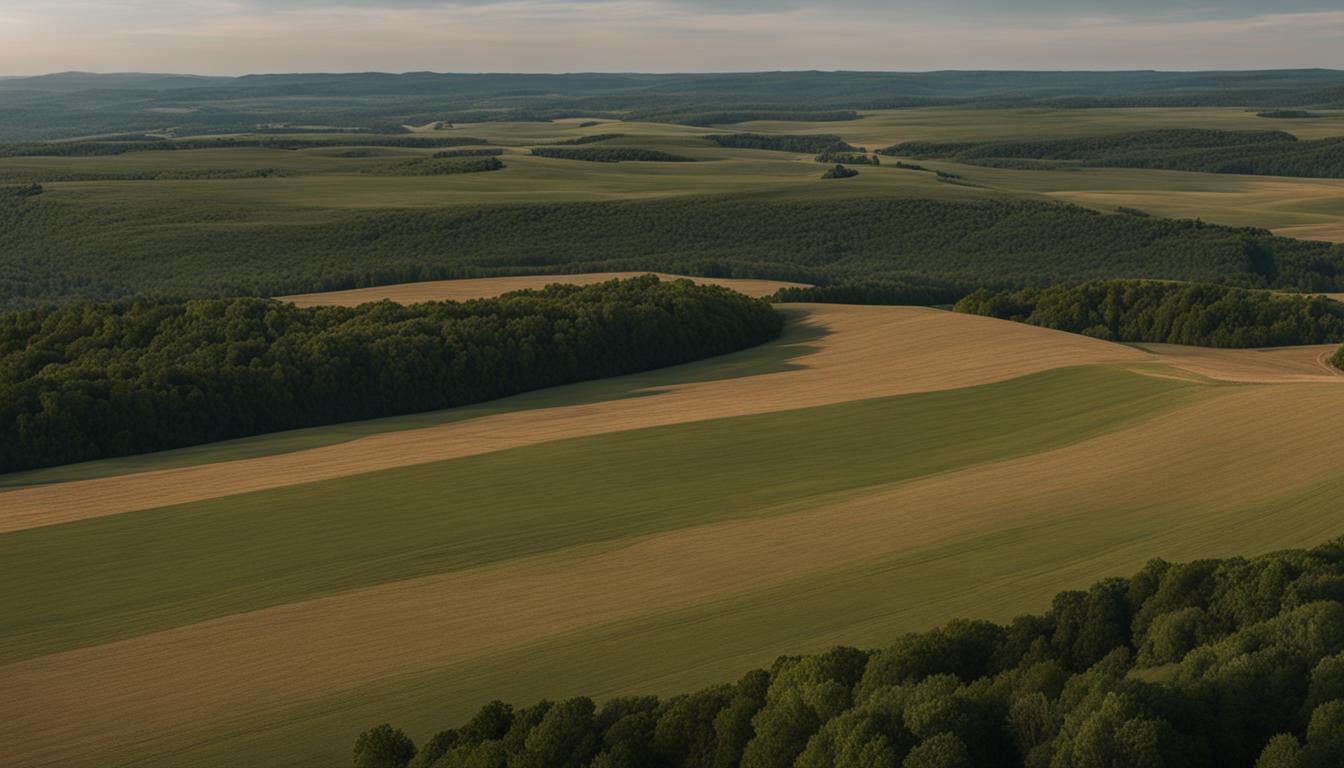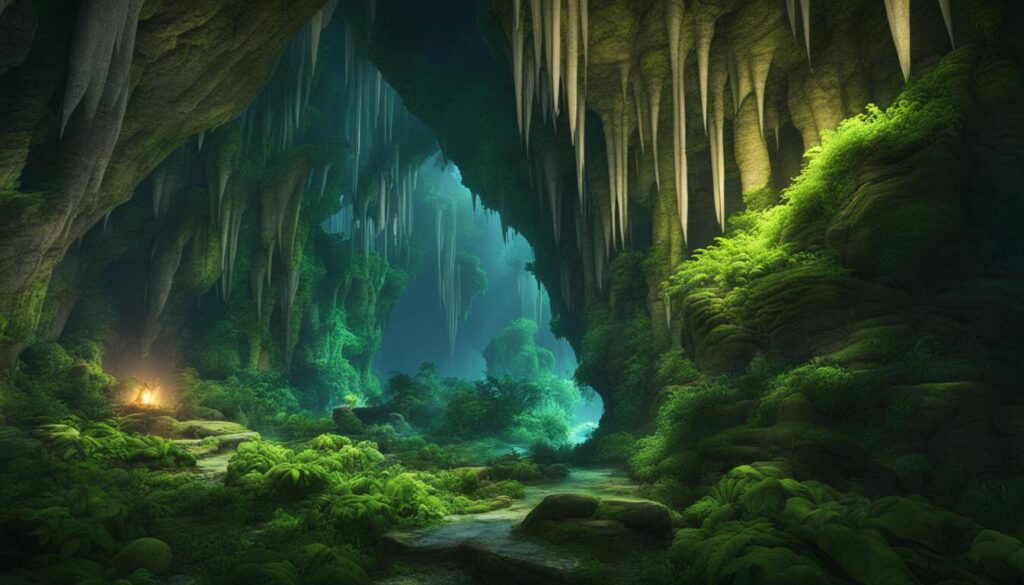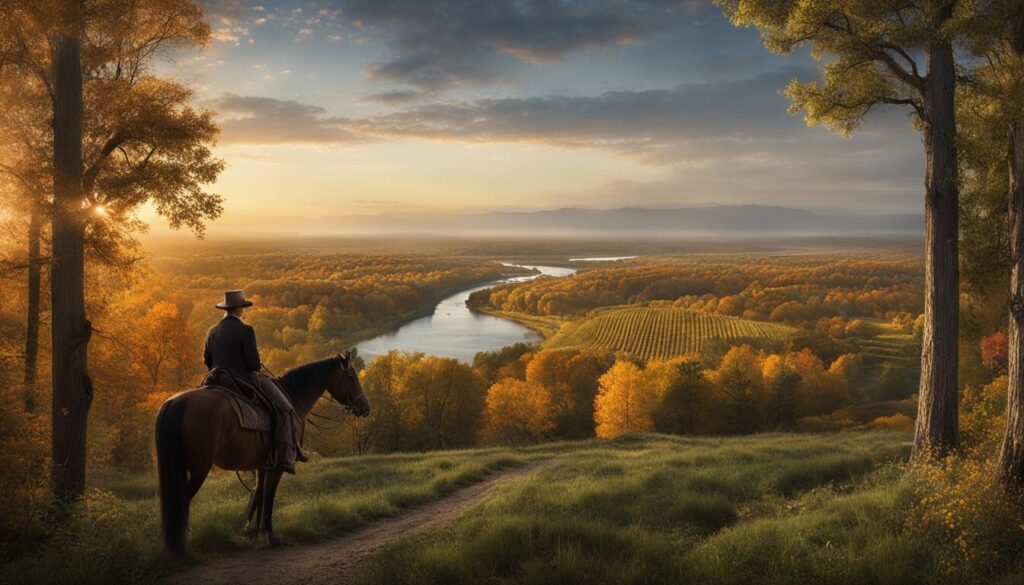Unraveling Why Missouri is Called the Show Me State
Have you ever wondered why Missouri is known as the Show Me State? Well, let me enlighten you. This intriguing nickname has its roots in a speech given by Congressman Willard Duncan Vandiver, hailing from Missouri. During his speech, he boldly declared, “I’m from Missouri, and you’ve got to show me.” And just like that, the Show Me State was born.
The nickname reflects the state’s reputation for skepticism and its residents’ demand for concrete evidence before accepting anything at face value. Whether it’s a claim, an idea, or a proposal, Missourians want to see proof before they believe. This deep-rooted skepticism has become an integral part of Missouri’s identity.
Key Takeaways:
- The Show Me State nickname originated from a speech by Congressman Willard Duncan Vandiver.
- Missourians have a reputation for skepticism and requiring evidence before accepting something.
- The nickname reflects Missouri’s identity as a state that demands proof.
- Missouri’s unique nickname adds depth to its history and cultural heritage.
- The exact origin of the nickname may be unclear, but its significance is undeniable.
The Missouri Nickname Legacy
Missouri’s nickname, the “Show Me State,” holds great significance and meaning behind its origin. The nickname has become an iconic part of Missouri’s identity, symbolizing the state’s residents’ demand for tangible evidence. It represents a spirit of skepticism and pragmatism, reflecting Missouri’s reputation for requiring proof before accepting something. This nickname showcases the state’s historical and cultural values, making it a unique and distinctive part of Missouri’s heritage.
The Show Me State nickname has stood the test of time and can even be found on Missouri’s license plates. It serves as a reminder of the state’s history and its people’s determination to seek the truth. Missouri’s residents have embraced the nickname, considering it a badge of honor that sets them apart.
While the exact origin of the nickname is uncertain, there are several popular theories and stories surrounding its creation. One theory suggests that it originated from a speech given by Congressman Willard Duncan Vandiver in which he used the phrase “you’ve got to show me.” Another theory claims that it originated as a derogatory reference to Missouri miners working in Leadville, Colorado. Regardless of its exact origin, the Show Me State nickname has become deeply ingrained in Missouri’s culture and identity.
Missouri Nickname Facts:
- Significance: Reflects Missouri’s residents’ demand for proof and tangible evidence.
- Origin: Exact origin is uncertain, with several theories and stories surrounding its creation.
- Historical legacy: The nickname has become an iconic part of Missouri’s identity and can be found on license plates.
- Cultural importance: Missouri residents embrace the nickname as a badge of honor that sets them apart.
The Show Me State nickname is a testament to Missouri’s unique qualities and highlights the state’s history, geography, and values. It represents the skepticism and demand for evidence that has become synonymous with Missouri’s residents. The nickname serves as a reminder of Missouri’s commitment to seeking the truth and its proud heritage as the Show Me State.
Early Stories and Theories
There are several stories and theories surrounding the origin of Missouri’s nickname, the “Show Me State.” One popular story revolves around Congressman Willard Duncan Vandiver’s speech, in which he used the phrase “you’ve got to show me.” This speech, delivered in 1899, is often credited as the catalyst for the nickname’s widespread use. Vandiver’s words reflected the skepticism and demand for evidence that Missouri residents were known for.
Another theory suggests that the nickname originated as a derogatory reference to Missouri miners working in Leadville, Colorado. It is said that these miners were known for their skeptical nature and would often challenge the credibility of others by demanding proof. The nickname “Show Me State” was then adopted as a way to mock and characterize the people of Missouri.
Yet another story claims that the name originated on passenger trains when conductors would ask for proof of a free pass. According to this theory, Missouri residents would proclaim, “You’ve got to show me!” indicating that they wouldn’t just take someone’s word for it and required evidence.
While the exact origin of the nickname may remain unclear, these stories and theories provide insight into Missouri’s reputation for skepticism and the demand for proof. The “Show Me State” moniker has become an enduring symbol of Missouri’s character and values.
Theories on the Origin of the “Show Me State” Nickname
| Theory | Explanation |
|---|---|
| Vandiver’s Speech | Congressman Vandiver’s use of the phrase “you’ve got to show me” in his 1899 speech is believed to have popularized the nickname. |
| Mocking Missouri Miners | The nickname may have originated as a derogatory reference to Missouri miners’ skepticism and demand for proof in Leadville, Colorado. |
| Passenger Train Proof Demands | According to this theory, Missouri residents would demand proof of a free pass on passenger trains, establishing the “Show Me State” mentality. |
The Cave State: Missouri’s Natural Beauty
Missouri, known as the Show Me State, is not only famous for its skeptical nature and demand for evidence, but it is also renowned for its breathtaking natural beauty. With over 5,600 registered caves, Missouri has rightfully earned the nickname “The Cave State.” These caves, scattered throughout the state, contribute to its unique geographical identity and provide opportunities for exploration and awe-inspiring experiences.
Visitors to Missouri can immerse themselves in the stunning subterranean world by embarking on guided cave tours. From the awe-inspiring rock formations to the mysterious underground rivers, these caves offer a glimpse into the hidden wonders of nature. The abundance of caves in Missouri adds to the state’s beauty and attracts adventure enthusiasts and nature lovers from around the world.
| Missouri Caves | Location | Features |
|---|---|---|
| Meramec Caverns | Sullivan | Stalactites and stalagmites |
| Onondaga Cave | Leasburg | Underground river and rare cave formations |
| Fantastic Caverns | Springfield | Only drive-through cave in North America |
| Marvel Cave | Branson | Deepest cave entrance in the United States |
Missouri’s caves not only showcase the state’s natural beauty, but they also offer a glimpse into its geological history. These underground wonders are a testament to the state’s rich and diverse landscape, making Missouri a true gem for nature enthusiasts and adventure seekers.
Missouri’s Rich Mining History – The Lead State and The Bullion State
Missouri has a fascinating history in the mining industry, especially when it comes to lead production. The state earned the nickname “The Lead State” for its impressive lead production, which ranked second in the country. The abundance of lead deposits in the “Old Lead Belt” region contributed to Missouri’s prominence in the lead mining industry. This nickname not only highlights the state’s historical importance but also the significant role it played in shaping the nation’s economy.
Another interesting nickname associated with Missouri’s mining history is “The Bullion State.” This title stems from the support of Senator Thomas Hart Benton for hard currency and his opposition to banks and paper money. Benton, popularly known as “Old Bullion,” championed monetary policies that prioritized the use of precious metals like gold and silver. The nickname “The Bullion State” reflects Missouri’s role in advocating for sound money principles and its impact on the nation’s financial landscape.
These unique nicknames shed light on Missouri’s rich mining heritage and its contribution to the country’s economic development. The state’s historical significance in the mining industry showcases its resilience and resourcefulness throughout the years. Whether it’s the lead production or the endorsement of sound monetary policies, Missouri’s mining history continues to shape its identity as the Show Me State.
| Nickname | Origin |
|---|---|
| The Lead State | Due to Missouri’s significant lead production, ranking second in the country. |
| The Bullion State | Refers to Senator Thomas Hart Benton’s support for hard currency and opposition to banks and paper money. |
Missouri’s Geographical Identity – The Cave State, The Ozark State, and The Iron Mountain State
Missouri’s unique geographical features have earned the state several distinct nicknames that highlight its natural beauty and diverse landscapes. From its abundance of caves to the towering Ozark Mountains and rich iron deposits, these nicknames showcase Missouri’s geological heritage and attract visitors from all over.
The Cave State
With over 5,600 registered caves, Missouri has rightfully earned the nickname “The Cave State.” These caves offer a fascinating glimpse into the state’s underground wonders and provide opportunities for exploration and adventure. From the well-known show caves, such as Meramec Caverns and Fantastic Caverns, to smaller yet equally captivating hidden gems, Missouri’s caves are a testament to its geological diversity.
The Ozark State
Home to the picturesque Ozark Mountains, Missouri has been affectionately dubbed “The Ozark State.” The rugged beauty of the mountains, lush forests, and winding rivers make this region a haven for outdoor enthusiasts. From hiking and camping to fishing and canoeing, the Ozarks offer a wealth of recreational activities for visitors and locals alike.
The Iron Mountain State
Missouri’s rich iron ore deposits in Iron Mountain have given rise to the nickname “The Iron Mountain State.” The area’s mining history and the significance of iron in Missouri’s economy have made this nickname a fitting tribute to the state’s industrial heritage. The Iron Mountain region offers a glimpse into Missouri’s past and its role in shaping the nation’s economy.
Overall, Missouri’s geographical identity is defined by its caves, mountains, and mineral wealth. These unique features have not only shaped the state’s landscape but also its culture and history. From the stunning natural formations found underground to the towering peaks of the Ozarks, Missouri’s geographical nicknames highlight the state’s beauty and provide a glimpse into its diverse landscapes.
Missouri’s Historical Importance – Mother of the West and The Gateway to the West
Missouri holds a significant place in American history, earning the nicknames “Mother of the West” and “The Gateway to the West.” These titles reflect the state’s crucial role in westward expansion and its position as the starting point for several historic trails and routes. Located at the crossroads of the country, Missouri served as a launching pad for journeys that shaped the nation.
One of the most famous trails that originated in Missouri is the Oregon Trail, which played a vital role in the westward migration during the 19th century. This trail began in the city of Independence and stretched over 2,000 miles to the Pacific Northwest. Missouri was also the starting point for the Santa Fe Trail, which connected Missouri to Santa Fe, New Mexico, and facilitated trade and commerce between the United States and Mexico.
Missouri’s position as a central hub for transportation and trade made it a prime location for other important routes as well. The Pony Express, a mail delivery service that operated from 1860 to 1861, began in Missouri and spanned across the Western states. The Butterfield Overland Mail Route, a stagecoach route that connected Missouri to California, also started in the state. These routes brought people, goods, and information across vast distances, shaping the development of the American West.
| Nickname | Explanation |
|---|---|
| Mother of the West | Reflects Missouri’s role as a starting point for westward expansion and its influence on the development of the American West. |
| The Gateway to the West | Highlights Missouri’s position as the entry point for the exploration and settlement of the Western frontier. |
Missouri’s capital, Jefferson City, is home to the National Expansion Memorial, which commemorates the state’s significance in westward expansion. The Gateway Arch, a prominent monument in the memorial, symbolizes both Missouri’s role as the gateway to the West and its historical importance in shaping the nation.
These nicknames not only celebrate Missouri’s past but also recognize its ongoing legacy as a pivotal state in the growth and development of the United States. Missouri’s historical importance as the “Mother of the West” and “The Gateway to the West” continues to resonate to this day.
Other Nicknames and Regional References
Aside from being known as the “Show Me State,” Missouri has acquired several other nicknames and regional references throughout its history. These nicknames provide additional insights into Missouri’s historical connections and regional associations. Here are some notable examples:
- The Puke State: This distasteful nickname originated from a large gathering of Missourians in 1827 at the Galena Lead Mines. While not a flattering reference, it serves as a reminder of Missouri’s historical events and the colorful nature of its past.
- Pennsylvania of the West: Missouri has often been compared to Pennsylvania in terms of its manufacturing and mining economy. This regional reference highlights the similarities between the two states and acknowledges Missouri’s role as a significant industrial hub in the western United States.
These additional nicknames contribute to Missouri’s rich and diverse identity, showcasing its historical ties and unique characteristics.
| Nickname | Origin |
|---|---|
| The Puke State | A reference to a gathering of Missourians at Galena Lead Mines in 1827 |
| Pennsylvania of the West | Comparison of Missouri’s manufacturing and mining economy to that of Pennsylvania |
“Missouri’s nicknames reflect the diverse aspects of the state’s history, geography, and culture. From the ‘Show Me State’ to ‘The Puke State’ and ‘Pennsylvania of the West,’ each nickname offers a glimpse into Missouri’s past and its unique regional identity. These diverse monikers create a tapestry of Missouri’s history and evoke a sense of curiosity about the state’s rich heritage.”
Missouri’s Unique Statehood Story
Missouri’s journey to statehood is intertwined with the complex issue of slavery and the delicate balance between slave and free states. The state’s admission to the Union in 1820 was part of the famous “Missouri Compromise,” a legislative agreement that aimed to maintain equilibrium between free and slave states. Under this compromise, Maine was admitted as a free state, while Missouri entered as a slave state. This compromise helped preserve the delicate balance in Congress and prevent a potential escalation of tensions over slavery.
The controversy surrounding Missouri’s admission to the Union sheds light on the historical context in which the state’s nickname, “Show Me State,” emerged. At that time, Missouri’s position on slavery and other issues was subject to scrutiny and skepticism. The nickname reflects the state’s reputation for requiring evidence and proof before accepting something as true. It symbolizes the state’s skeptical nature and the demand for tangible facts, which were crucial during this period of social and political tension.
The Missouri Compromise not only influenced Missouri’s statehood but also played a significant role in shaping the nation’s history. It showcased the ongoing struggle between states advocating for and against slavery, highlighting the deep divisions that would ultimately lead to the American Civil War. Missouri’s nickname, the “Show Me State,” serves as a reminder of this pivotal moment in the state’s history and the broader context of the United States during that time.
The Missouri Compromise: A Balancing Act
To fully understand Missouri’s unique statehood story, it is essential to delve into the details of the Missouri Compromise. This legislation was introduced by Henry Clay and resolved the dispute over Missouri’s admission to the Union, which had sparked intense debates in Congress. The compromise allowed Missouri to enter as a slave state but prohibited slavery in the remaining portion of the Louisiana Territory north of the 36°30′ parallel, except for Missouri itself.
By admitting Missouri as a slave state and Maine as a free state simultaneously, the Missouri Compromise maintained the delicate balance between slave and free states in Congress. It sought to address concerns about the potential domination of one side over the other. This compromise, while providing a temporary solution, ultimately fueled tensions between the North and South, contributing to the deepening divisions that would culminate in the Civil War.
Missouri’s nickname, the “Show Me State,” emerged during this era of heightened scrutiny and meticulous negotiation. It embodies the state’s commitment to demanding evidence and proof, a sentiment rooted in the historical context of Missouri’s statehood.
| Missouri’s Unique Statehood Story | |
|---|---|
| Year | Event |
| 1820 | Missouri admitted to the Union as a slave state under the Missouri Compromise |
| 1821 | Missouri officially becomes the 24th state in the United States |
Conclusion
After exploring the history and significance of Missouri’s nickname, the “Show Me State,” it becomes clear why this title has become ingrained in the state’s identity. Missouri has a reputation for being skeptical and demanding proof, and this trait is reflected in the nickname’s origin. While the exact story behind its creation remains unknown, the phrase “show me” embodies the state’s pragmatic nature and its residents’ insistence on tangible evidence.
Missouri’s nickname is not limited to skepticism alone; it also represents the state’s geographical diversity and historical importance. The abundance of caves has earned it the title “The Cave State,” while the presence of the Ozark Mountains and rich iron ore deposits have contributed to the designations of “The Ozark State” and “The Iron Mountain State,” respectively. Furthermore, Missouri’s role in westward expansion and its status as the starting point for significant trails and routes have led to its nicknames “Mother of the West” and “The Gateway to the West.”
Overall, the nickname “Show Me State” encapsulates Missouri’s unique qualities and characteristics, from its historical significance to its natural wonders. It is a testament to the state’s individuality and its residents’ determination to seek truth and evidence in all aspects of life. Missouri truly lives up to its nickname, making it a fascinating state with a rich history that continues to shape its identity today.
FAQ
Why is Missouri called the Show Me State?
Missouri is called the Show Me State because of a speech given by Congressman Willard Duncan Vandiver in which he said, “I’m from Missouri, and you’ve got to show me.” The phrase reflects the state’s reputation for being skeptical and requiring evidence before accepting something.
What is the origin of Missouri’s nickname?
The exact origin of Missouri’s nickname, the Show Me State, is unclear. However, there are several popular stories and theories surrounding its creation. One story revolves around Congressman Vandiver’s speech, while another suggests it originated as a derogatory reference to Missouri miners in Colorado. Another theory claims it originated on passenger trains when conductors would ask for proof of a free pass.
What does the nickname “Show Me State” represent?
The nickname “Show Me State” represents Missouri’s residents’ demand for proof and evidence. It symbolizes the state’s pragmatic nature and its reputation for being skeptical and requiring tangible evidence before accepting something.
Why is Missouri also known as “The Cave State”?
Missouri is known as “The Cave State” because it is home to thousands of caves. Over 5,600 caves have been registered in Missouri, and some are open to the public for guided tours. The abundance of caves adds to the state’s natural beauty and attracts visitors from around the world.
What is the significance of Missouri’s mining history?
Missouri has a rich mining history, particularly in the lead industry. The state’s lead production was second to none in the country, earning it the nickname “The Lead State.” Additionally, Missouri has been referred to as “The Bullion State” due to Senator Thomas Hart Benton’s support of hard currency and opposition to banks and paper money.
What other geographical nicknames does Missouri have?
Besides being known as the Show Me State and The Cave State, Missouri is also referred to as “The Ozark State” due to the presence of the Ozark Mountains, and “The Iron Mountain State” because of the rich iron ore deposits in Iron Mountain.
What is Missouri’s historical importance?
Missouri has been called “Mother of the West” and “The Gateway to the West” because of its role in westward expansion and its association with significant trails and routes, such as the Oregon Trail, Santa Fe Trail, Pony Express, and Butterfield Overland Mail Route. The state’s capital, Jefferson City, is home to the National Expansion Memorial, which honors Missouri’s contribution to westward expansion.
Are there any other nicknames associated with Missouri?
Yes, Missouri has acquired several other nicknames and regional references throughout its history. These include “The Puke State,” associated with a gathering of Missourians in 1827 at the Galena Lead Mines, and “Pennsylvania of the West,” reflecting similarities between Missouri’s manufacturing and mining economy and that of Pennsylvania.
How was Missouri’s statehood influenced by slavery?
Missouri’s admission to the Union in 1820 was part of the “Missouri Compromise,” which admitted Maine as a free state to balance out Missouri’s admission as a slave state. The issue of slavery and the delicate balance between slave and free states in Congress played a significant role in Missouri’s path to statehood.
What is the conclusion of Missouri’s nickname history?
Missouri’s nickname, the Show Me State, has become an integral part of the state’s identity. It reflects the residents’ demand for proof and evidence and symbolizes Missouri’s history, geography, and unique qualities. The exact origin of the nickname may be uncertain, but its meaning and significance are clear.








